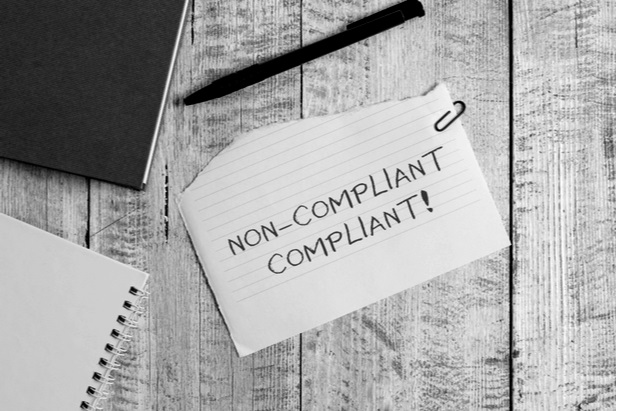As the SECURE Act was getting stiff-armed by a handfulof lawmakers in the Senate after passing out of the House ofRepresentatives last spring, the prevailing narrative was that theretirement bill would have to be attached to a must-pass,end-of-year spending package in order to become law.
|Advocates for SECURE reportedly descended on the nation'sCapitol to make their case as lawmakers negotiated the contours ofthe 2020 budget. In the end, those advocates got their wish, andSECURE became law when the president signed the spendingpackage.
|But as they made their pitch, SECURE's advocates walked a bit ofa tightrope. Many important provisions of the law that had earlierpassed the House carried a January 1, 2020 effective date.
|Implementing the back-office and platform changes necessary tosupport those provisions would take time, money, and regulatoryguidance. Achieving that by the New Year would be impossible.
|But lobbying for changes in the effective dates as they pushedto get SECURE attached was a perilous proposition, and would"jeopardize the small window to ensure passage," wrote Tim Rouse,executive director of the SPARK Institute, in a letter toregulators.
|So SECURE's champions happily bit the bullet and the result wasthis: passage of a retirement bill that creates immediate changesin the law that plan providers can't immediately accommodate.
|Here are the provisions that are effective immediately thatawait input from regulators, as enumerated in the SPARK Institute'sletter to regulators.
|1. Good faith relief
The SPARK Institute—plan recordkeepers are its largestconstituent–is not asking regulators to delay retirement savers'access to the new, favorable tax provisions in the law.
|Rather, they are asking for good faith relief if penalties arisefrom a failure to immediately implement changes to retirementplatforms.
|"It has been the longstanding Treasury and Internal RevenueService position that in the absence of guidance on changes to theInternal Revenue Code, taxpayers can rely on any reasonable goodfaith interpretation of the Code. We fully expect Treasury and theService to do the same here, but the sooner that you can make suchan announcement, the better," SPARK wrote in its letter toTreasury.
|2. Changes to RMDs and Stretch IRA
SECURE changed the required minimum distribution age requirementin qualified retirement plans from 70 ½ to 72.
|Because systems have not been changed, some distributions madethis year under the old rule will be treated as an RMD, even thoughthey are not.
|RMDs can't be rolled over into another qualified plan. Nor arethey subject to the 20 percent withholding rate for otherdistributions. And sponsors are not required to send a specificnotification with RMDs. Here's the relief SPARK is looking for:
- a plan is not disqualified if it makes a distribution under theold RMD
- a plan that makes a distribution under the old RMD can treat itas not being eligible for a rollover, unless the saver requests itbe rolled over
- if a required notice is not delivered, the plan is notpenalized
- if a plan makes a distribution under the old RMD, the 20percent withholding does not apply
- an IRA issuer is not penalized if they send notice an RMD isrequired in 2020, when under the new law it is not
SECURE also eliminated the Stretch IRA, meaning beneficiaries ofinherited plans who are not a spouse have to draw down the accountwithin 10 years. SPARK is seeking similar good faith reliefadministering those changes.
|3. Temporarily eliminating 60-day restriction onre-contributions
Because distributions might be inadvertently made as RMDs, SPARKwants regulators to allow that money to be reinvested in plansoutside the 60-day window allowed to roll over a plandistribution.
|Under tax law, savers are limited to one distribution rolloverper year. In the event of an inadvertent RMD that is rolled over,or back into the plan, SPARK says that must not count against theone-rollover-a-year rule.
|4. Withdrawals for births or adoptions
SECURE allows new parents to withdraw up to $5,000 fromqualified retirement accounts.
|Those withdrawals are exempt from the 10 percent penalty onearly withdrawals, don't have a 20 percent withholding requirement,and can be repaid outside the 60-day window for other earlywithdrawals.
|SPARK needs confirmation the new withdrawal is optional for plansponsors to offer.
|Furthermore, recordkeeping systems have no way to determinewhether a distribution request is for a baby.
|"We urge guidance confirming that, in the case of anydistribution otherwise allowed by the plan, the plan administratorcan treat the distribution as an eligible rollover distributioneven if the participant states that this distribution is being madein connection with a birth or adoption," SPARK's letter says.
|5. Relief for outdated 402(f) notices
Treasury's model 402(f) notice, which explains a saver's optionswhen they receive a distribution, has been made outdated by thechanges in SECURE.
|The IRS will need time to update its model notice.
|"We expect outdated section 402(f) notices will be provided,and, because of the SECURE Act changes, section 402(f) notices willnot be provided when they should be (and vice versa)," SPARK says."We recommend relief for inadvertent violations of section402(f)."
|6. Safe Harbor auto-escalation bumped up to 15 percent
Before SECURE, sponsors could implement an automatic escalationsafe harbor that capped savings deferrals at 10 percent ofsalary.
|Now, that cap is 15 percent. But payroll systems will need timeto account for the change.
|SPARK wants confirmation the change is optional—that plans thatkeep the 10 percent cap can maintain their safe harbor status. Andrecordkeepers need guidance on how to address the change in plandocuments, and on those occasions where an improper deferral ismade.
|7. Contributions to traditional IRAs after age 70 ½
SECURE removed a restriction on contributions to traditionalIRAs after age 70 ½.
|The old restriction is hardwired into agreements with savers andretirees. SPARK wants regulators to allow issuers until the end of2020 to update their systems and contracts to allow for the newcontributions to traditional IRAs.
|8. 529s for student loan repayment
SECURE allows for a $10,000 distribution from a 529 plan towardthe student loan repayment of the beneficiary of the account,andalso a sibling of that account.
|"No section 529 plan administrators are set up to collect andtrack any information about anyone other than the account owner orthe account beneficiary, and will not be able to build a system tocollect that information in time for 2020 distributions to begin,"SPARK says.
|READ MORE:
Complete your profile to continue reading and get FREE access to BenefitsPRO, part of your ALM digital membership.
Your access to unlimited BenefitsPRO content isn’t changing.
Once you are an ALM digital member, you’ll receive:
- Critical BenefitsPRO information including cutting edge post-reform success strategies, access to educational webcasts and videos, resources from industry leaders, and informative Newsletters.
- Exclusive discounts on ALM, BenefitsPRO magazine and BenefitsPRO.com events
- Access to other award-winning ALM websites including ThinkAdvisor.com and Law.com
Already have an account? Sign In








